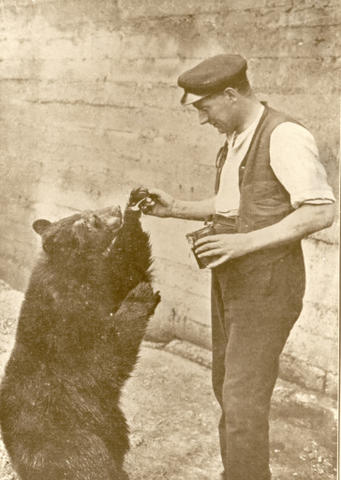
Área de identidad
Tipo de entidad
Forma autorizada del nombre
Forma(s) paralela(s) de nombre
Forma(s) normalizada del nombre, de acuerdo a otras reglas
Otra(s) forma(s) de nombre
Identificadores para instituciones
Área de descripción
Fechas de existencia
Historia
On 24th August 1914, en route to war in Europe, Lieutenant Harry Colebourn puchased a black bear cub at White River, Ontario. He called her Winnie after his home town in Winnipeg. Lt. Colebourn took her with him to England, where his regiment was training. The bear became the pet of the soldiers and the mascot of the regiment. She was left at London Zoo for safekeeping when the regiment went to fight in France. Lt. Colebourn had intended to take Winnie back to Canada with him when the war was over, and he often visited her at the Zoo when on leave. However, when the war ended, Lt. Colebourn donated Winnie to London Zoo in appreciated of the care that had been taken of her in those years, and in recognition that Winnie had become a great favourite with visitors. Winnie was said to have a remarkably good nature, was very tame, and could be stroked and played with. She used to give children rides and would also eat out of their hands. The author A.A. Milne and his son Christopher were frequent visitors to Winnie. As a result, Winnie the Pooh was named after her. Winnie died in 1934. A statue was presented to London Zoo by the people of Manitoba on 19th July 1995